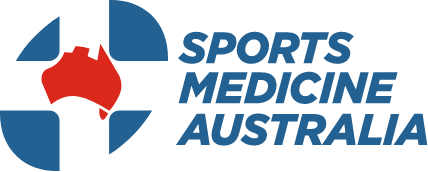Cross-Country Skiing Fact Sheet
Facts on cross-country skiing injuries
Cross-country skiing is a popular sport for participants of all ages and skill levels. The 2008 Exercise, Recreation and Sport Survey (ERASS) estimated 227,900 Australians participated in snow and ice sports during the previous 12 months, with cross-country skiers accounting for approximately 20% of all participants. Cross-country skiing is a physically demanding sport that requires a high level of fitness and skill. The sport places many demands on one’s technical and physical ability and, as a result, injuries can and do occur.
How many injuries?
- From 2003-2008, snow skiing statistics recorded 873 Victorian hospital admissions, an average of 195 per year. Of these 15 cases (1.7%) were related to cross country skiing.
- During this time 435 Victorian emergency department presentations for snow skiing were also recorded, an average of 87 per year. Of these 5 cases (1.1%) were related to cross country skiing.
- 15-19 year olds (15%) and 40-44 year olds (12%) were most frequently admitted to hospital with a snow skiing related injury. Cross country injury cases were evenly distributed between genders.
- 15-19 year olds (16%) and 20-24 year olds (16%) most frequently presented at emergency departments with a snow skiing related injury. Males were over- represented (60%).
The causes and types of injuries
- Risk factors for injury include fatigue, poor condition of ski tracks, downhill segments of the terrain, unsuitable equipment, poor balance and inadequate mastery of skiing technique.
- Falls are the most common cause of injury in cross country skiing.
- Knees are the most common body part injured accounting for around one-quarter of cross-country skiing injuries. Others include the forearm/wrist/hand, thumb and ankle.
- Overuse and cold injuries (e.g. hypothermia and frostbite) also occur.
Safety tips for cross-country skiing
- Good preparation is important
- Undertake pre-season conditioning and training to build fitness, strength and flexibility.
- Always warm up, stretch and cool down.
- Novice skiers should undertake lessons, to learn proper use of equipment and improve skills.
- Take snow conditions into consideration. Only ride in good conditions. Know your limitations and choose trails and distances accordingly.
Good technique and practices will help prevent injury
- Read and practise safety recommendations within the SnowSafe booklet available at www.snowsafe.org.au (particularly important for ski touring).
- Look for hazards such as deep tracks, ruts, iciness and sharp bends.
- Hold poles correctly. Put the strap on your wrist and then hold the ski pole so that the strap is included in your grip.
- Be aware of, and adhere to, skiers’ courtesy and safety codes.
- Ski in groups of three or more. If one person is injured, one person can stay with them while the other goes for help.
- Know the symptoms of and remedies for frostbite and hypothermia. Check other group members for symptoms regularly.
Wear the right protective equipment
- Seek professional advice when choosing or hiring equipment to ensure it suits your activity, skill level and physical characteristics.
- Choose boots relevant to your cross-country activity, for example touring, racing or skating. Boots should fit well, be durable and waterproof, and provide thermal protection.
- Keep equipment in good working order. Have skis serviced once a year.
- Ensure your skis are waxed and there is tread pattern on non-waxing skis.
- Wear appropriate clothing including thermal underwear, waterproof jacket and trousers, warm socks (preferably thermal), waterproof gloves, a warm hat or balaclava and a scarf. Layer clothing so it can be removed to control body temperature.
- If ski touring, wear a backpack containing spare clothing, food and drink, a compass, maps, waterproof matches or a cigarette lighter, candles or torch, a lightweight emergency blanket, emergency repair equipment, a waxing kit, a first aid kit and a whistle.
Additional considerations
- Wear SPF 30+ broad spectrum sunscreen and eyewear that meets the Australian standard, even on cloudy days. Be aware that some medications can make the skin highly susceptible to sunburn.
Other safety tips
- Always inform someone of where you intend to ski, how long you will be gone for and the time you expect to return.
- Children should only ski with a responsible adult.
- Take rest periods and eat and drink at regular intervals to maintain energy and hydration levels to enhance performance and reduce the likelihood of injury.
- Do not ski under the influence of alcohol. Alcohol can negatively affect skiing performance and contribute to hypothermia.
If an injury occurs
- If you are injured, or come across an injured skier, send someone to alert the ski patrol. If possible, one person should stay with the injured skier until help arrives.
- All injured skiers should receive first aid and ensure they are fully rehabilitated before returning to skiing.
For further information contact
Smartplay – Sports Medicine Australia (Victorian Branch) Sports House, 375 Albert Road, Albert Park VIC 3206
Phone: 03 9674 8777 Email: [email protected] Website: www.smartplay.com.au
Smartplay is supported by VicHealth and the Department of Planning and Community Development (Sport and Recreation Victoria) and provides information on safe sport participation.
Victorian Snowsports Association
PO Box 522, Brighton VIC 3186 Phone: 03 9696 5462 Email: [email protected] Website: www.vsa.org.au
Victorian Injury Surveillance Unit
Monash University Accident Research Centre Building 70, Wellington Road, Clayton VIC 3800 Phone: 03 9905 1805 Email: [email protected] Website: www.monash.edu.au/muarc/visu
Snowsafe – www.snowsafe.org.au
Disabled Wintersport Victoria – www.disabledwintersport.com.au
References
For a full list of references, contact Smartplay.
Acknowledgments
Prepared by Monash University Accident Research Centre 1996. Updated and reprinted 2009.
